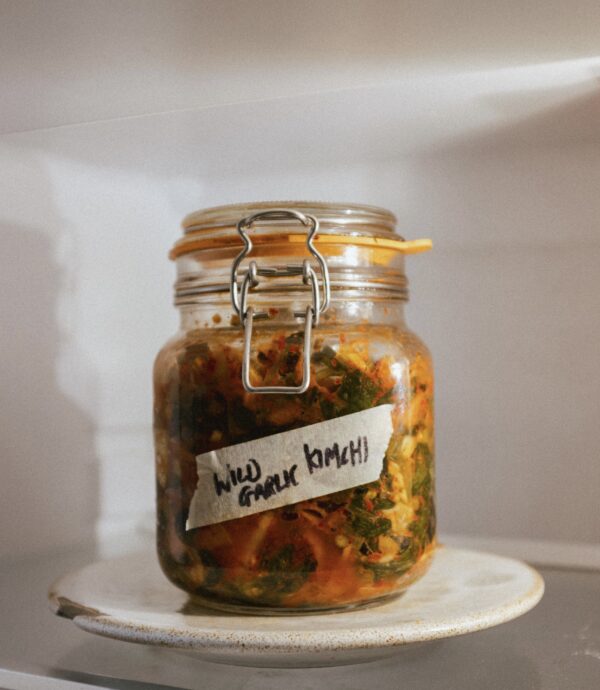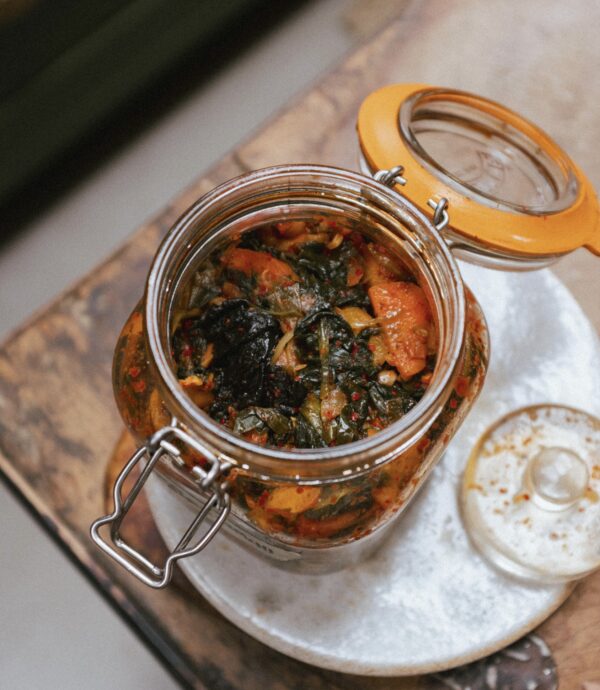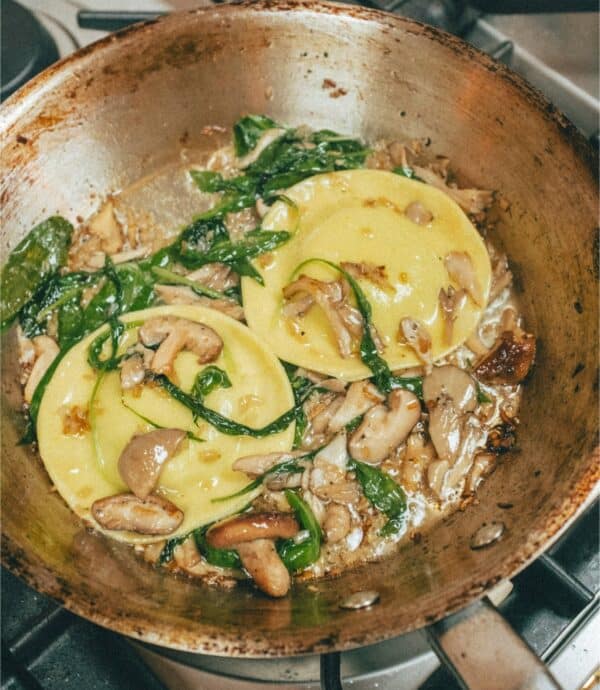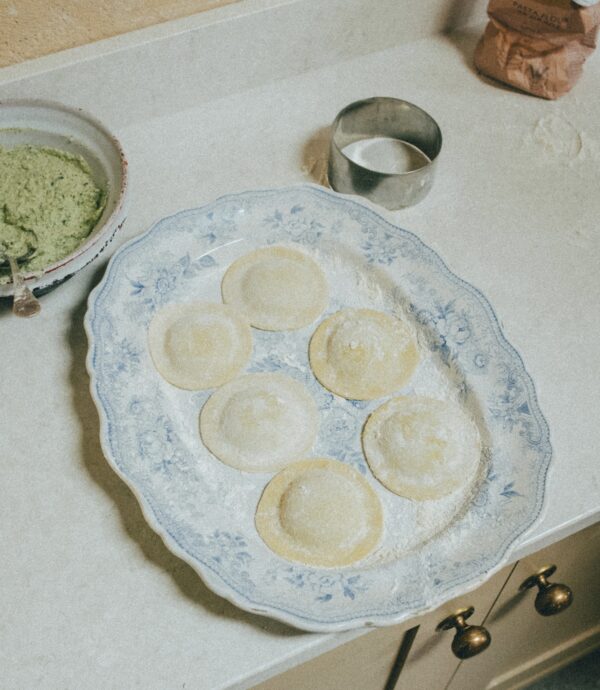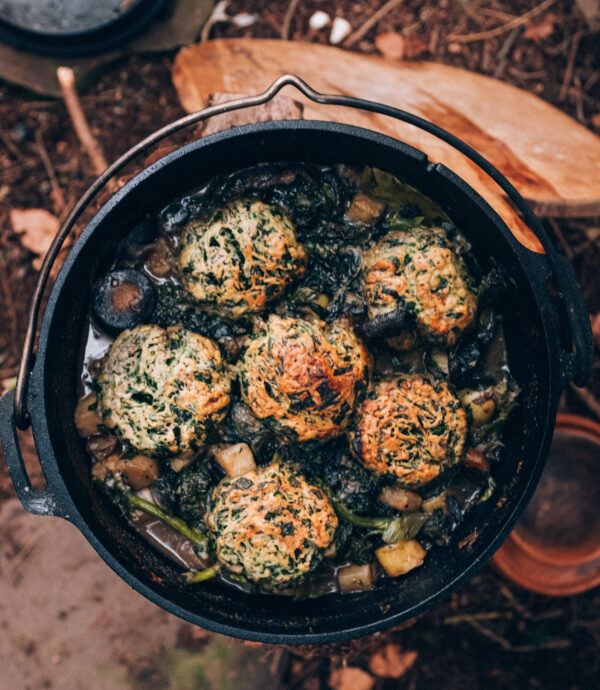Spiced Parsnip Sauerkraut
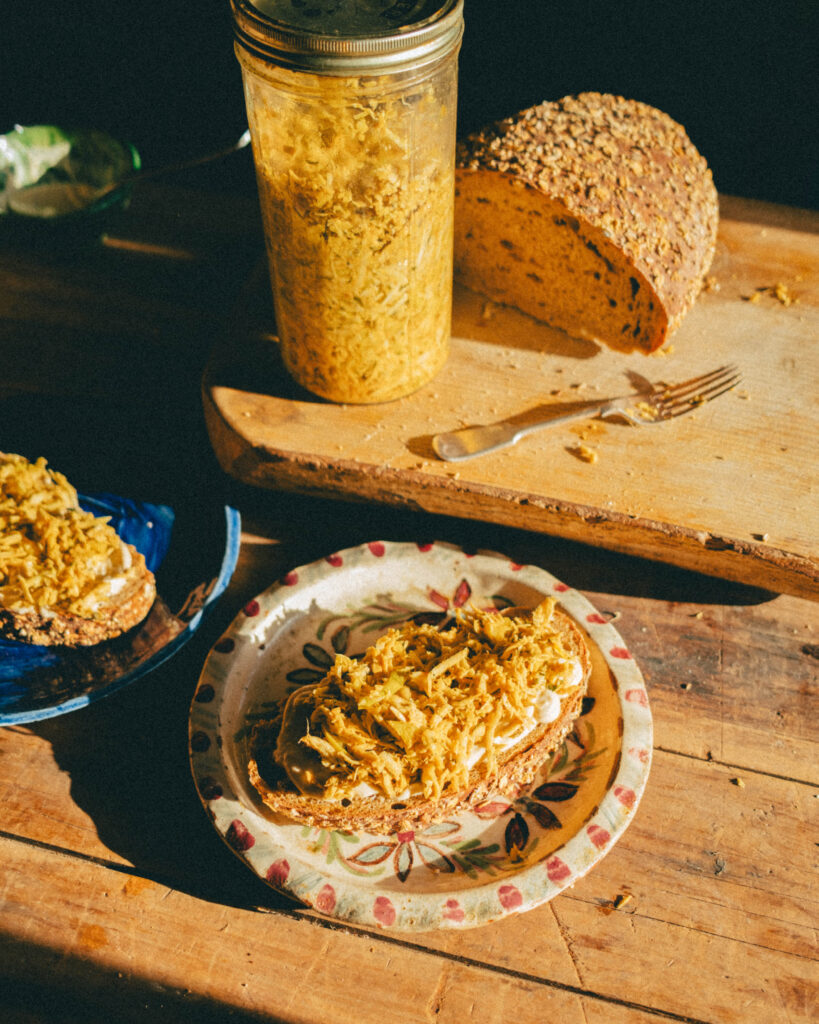
Ingredients
4 Parsnips, peeled, grate
2 Apples, sliced fine
1 Hot Chilli, chopped small
4 cloves Garlic, minced
Thumbed Piece Fresh Ginger, minced
Handful Coriander or Nasturtium Leaves
1/2 tsp Ground Turmeric
1 tsp Garam Masala
1 tsp Fennel Seeds
2% Sea Salt
Method
Way all the ingredients in a mixing bowl. Work out what 2% of the weight is, then add that weight in sea salt. Mix really well, then cover the bowl & set it aside at room temperature for the liquids to be drawn out. After an hour or two check to see if the mix has created a decent amount of liquid. If not just dissolve a 1/2 tsp of sea salt into 1/2 a cup of water (125ml). Then add that to the mix.
Pack the kraut tightly into some clean mason jars, then use some bay leaves or a nasturtium leaf to keep the kraut below the brine, then a weight on top. You need everything to sit around a cm beneath the brine, and nothing can be floating otherwise the kraut may spoil.
Seal the jar & leave the kraut to ferment for up to a week. Burp the jar every now & then to release any gas build up.
When the kraut has reached the level of tang you like, its ready to enjoy.
The kraut will store in the fridge for up to 12 weeks.
Begin by weighing all the prepared ingredients and placing them into a mixing bowl. Calculate 2% of the total weight then add that weight in fine sea salt. Thoroughly mix to ensure even distribution, then cover the bowl and allow it to sit at room temperature. This will draw out liquid we really need to create our kraut.
After one to two hours, inspect the mixture to see whether it has produced a substantial quantity of liquid. If there’s not a lot of liquid formation, dissolve half a teaspoon of sea salt into 125 milliliters of water, and mix this solution into the kraut.
Next, transfer the kraut into clean mason jars, ensuring it is compactly packed. Use a large bay or nasturtium leave as a barrier to keep the kraut submerged beneath the brine, then place a weight on top, I use special fermentation weights but you could just use a clean pebble. It is crucial to maintain all contents approximately one cm below the brine level, preventing any floating bits, to avoid spoilage.
Seal the jars and allow the kraut to ferment for up to a week. Every now and then ‘burp’ the jars to release any gases.
After the 5 day mark taste the kraut’s until it achieves your preferred level of tanginess, at which point it will be ready to consume. Store the kraut in your fridge and enjoy at your leisure.
Properly stored in the refrigerator, the kraut can be preserved for up to 12 weeks.
